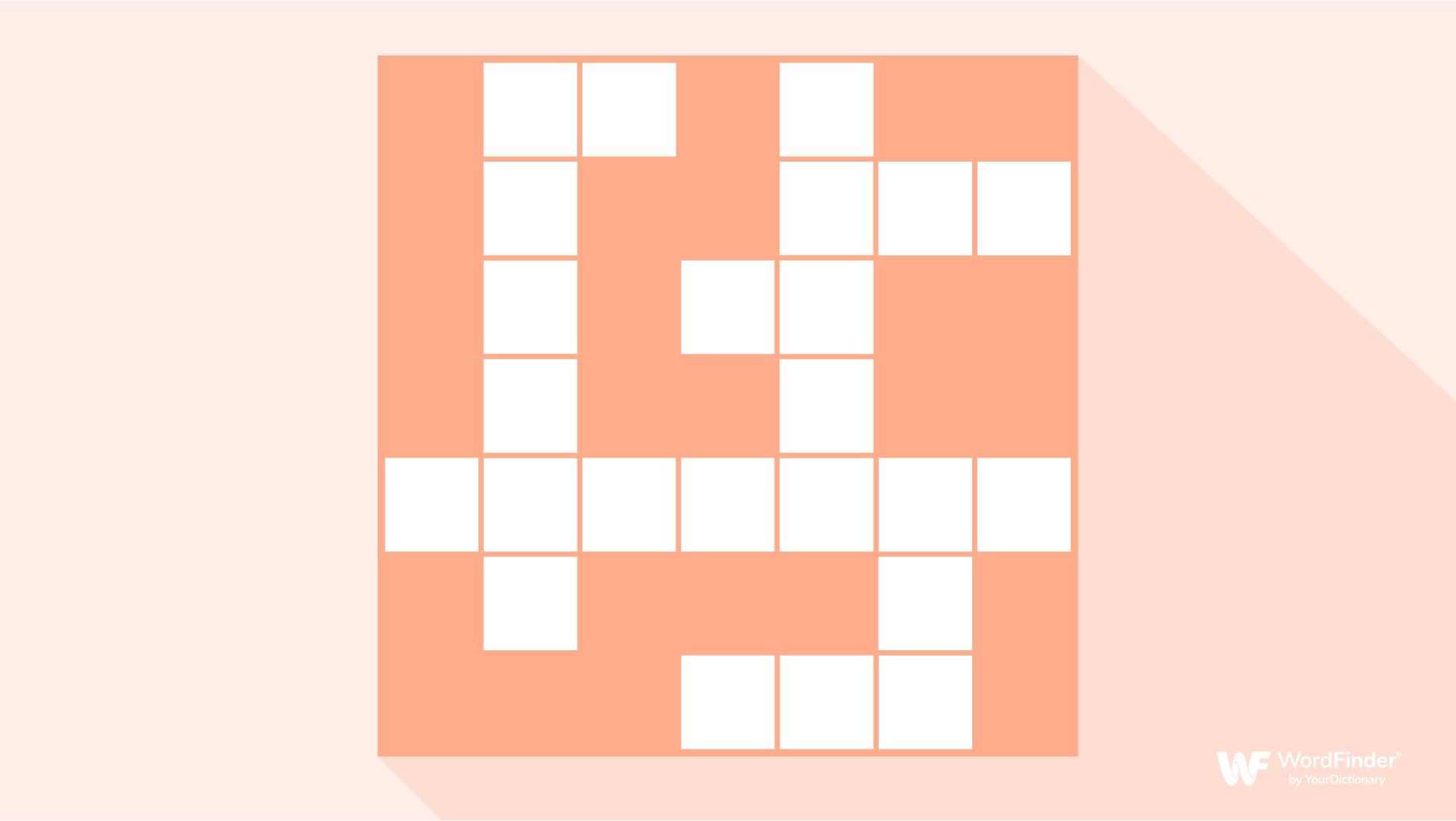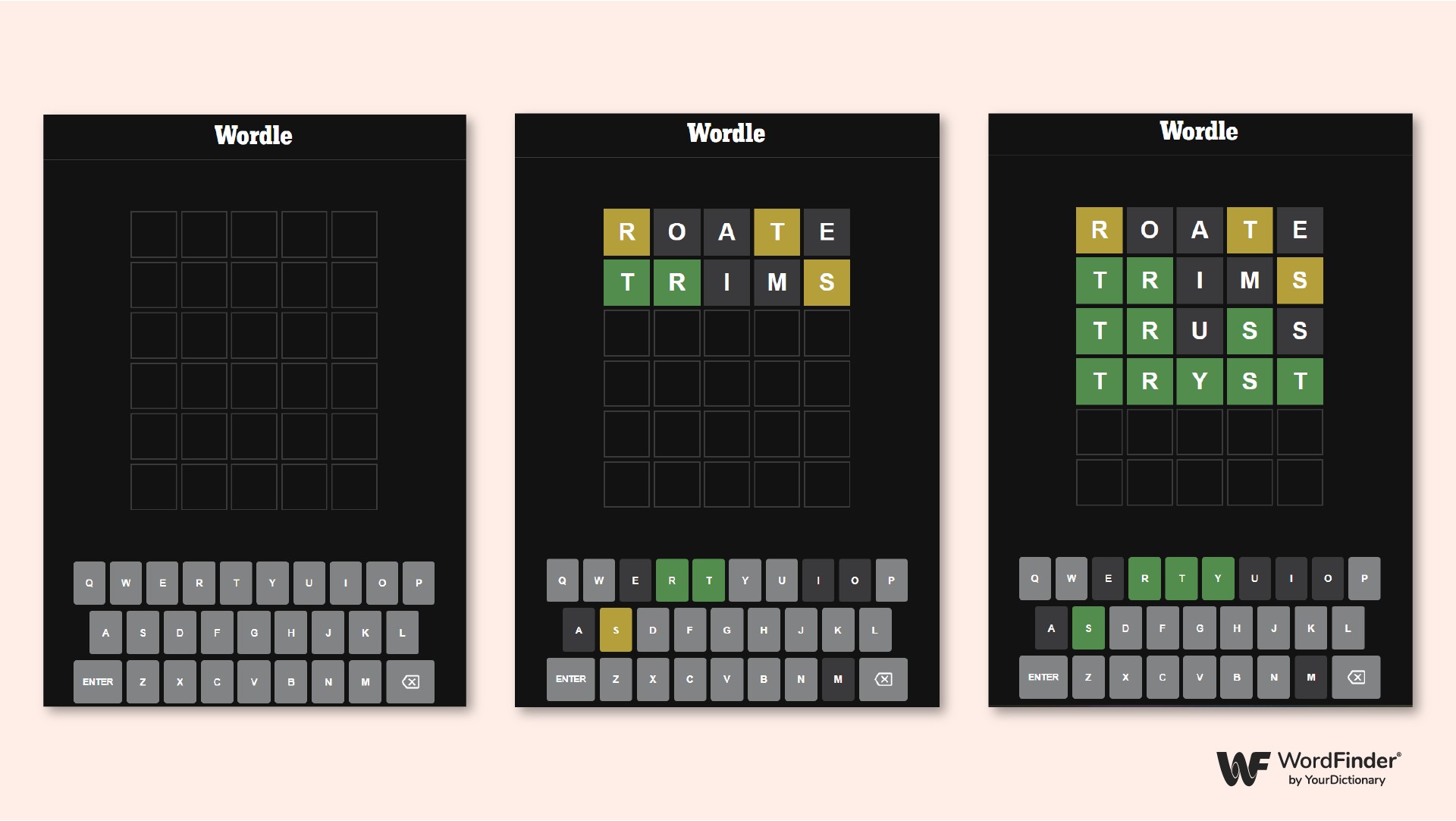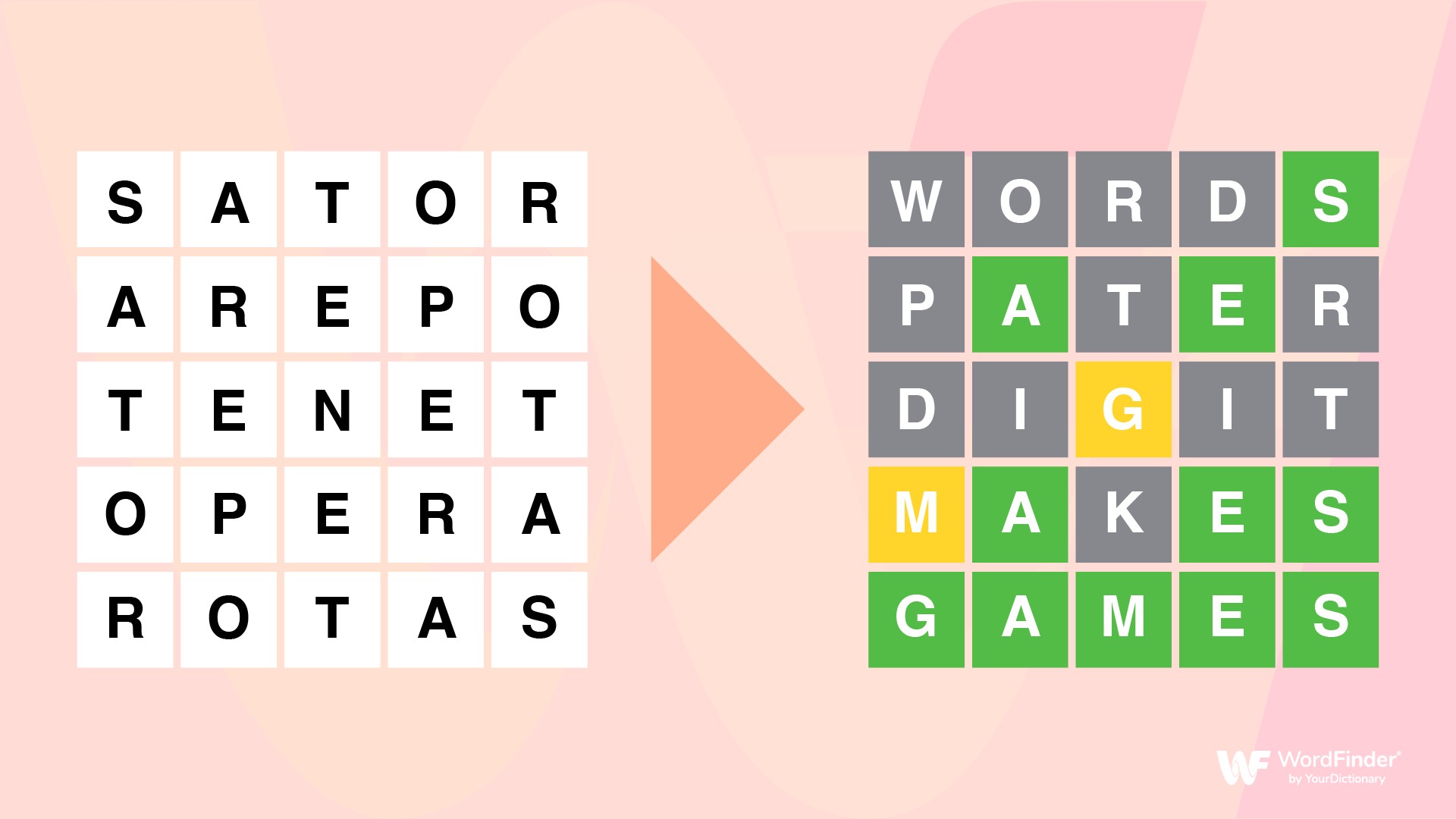The Ancient Origins of the Sator Square
Word games have essentially existed for as long as there have been words, both spoken and written. Regardless of language, all groups and societies have their own forms of wordplay. And, we can trace the history of word games we play today back to those early creative uses of language.
Understanding the Sator Square (79 AD or Earlier)
One of the oldest and most well-known examples of wordplay is the word square. And the earliest-known example of a word square is the Sator Square, also known as the Rotas Square. Historians have found this particular word square throughout what used to be the Ancient Roman Empire. The Sator Square is a square made of five, five-letter words. These words are:
Sator: A sower, planter or founder.
Arepo: A proper name, possibly Egyptian in origin.
Tenet: To hold, keep or preserve something.
Opera: A job, work or service.
Rotas: Wheels or something that rotates.
Taken as a whole, the Sator Square words roughly translate as, “The farmer Arepo uses his plow to work.” Though there are several ways to translate and interpret the words, this is the general message across all variants.
When set in the correct order, this word square becomes a palindrome with four symmetries.
In other words, you can read the Sator Square from top-to-bottom, bottom-to-top, left-to-right and right-to-left. You can even rotate the Rotas Square 180 degrees and still be able to read all five words.
The Original Purpose of the Rotas Square
The precise origins of the Sator Square and its uses aren’t entirely known. Currently, historians have a vague understanding of some practical reasons people would repeatedly create the square.
Some researchers believe the original purpose was to ward off evil spirits. The patterns the letters create were believed to signify that a person or home was to be spared of any harm. Many people in the ancient world inscribed the Sator Square on doorways or on items like talismans or amulets in hopes that the square would protect them.
Pater Noster and the Early Christian Church
The other most common use for the Rotas Square was for religious purposes. During the early days of the Christian church, Christians would use cryptic codes and markings to help believers find each other and escape persecution. One such marking was the Sator Square.
If you rearrange all of the letters in a specific way and leave the N in the middle, you can create the phrase “Pater Noster” in both horizontal and vertical lines. “Pater Noster” translates to “Our Father,” which is the start of the Lord’s Prayer.

Originally, historians believed that Christians were the first to use the square. However, researchers have since discovered a copy of the Sator Square in the ruins of Pompeii, which predates the Christian church by about a century.
The Windsor Enigma and Other Victorian Word Puzzles (1800s)
It was during the Victorian era in the 19th century that word games truly became popular. They were ways to entertain and puzzle people while also demonstrating the crafty wit of those who created them.
Queen Victoria’s Windsor Enigma (1800s)
Perhaps the most noteworthy puzzle to come out of the 1800s was the Windsor Enigma. Reportedly, Queen Victoria herself created the puzzle. The puzzle reads:
“The INITIALS of the following places form the name of a town in England, and the FINALS (read upwards) what that town is famous for.”
A city in Italy.
A river in Germany.
A town in the United States.
A town in North America.
A town in Holland.
The Turkish name for Constantinople.
A town in Bothnia.
A city in Greece.
A circle on the globe.
By stacking the answers to each question in sequential order, someone can read each location’s first letter from top to bottom and their last letter from bottom to top to deduce the answer.
(We’ve included the answer to the Windsor Enigma at the bottom of this article, in case you want to try to solve it on your own first.)
Lewis Carroll’s Doublets Word Game (1877)
During the Christmas season of 1877, on Christmas Day itself, Lewis Carroll (of Alice and Wonderland fame) created a word game called Doublets. This game would become a popular magazine word game at the time and a classic game formula today.
The Doublets game, which Lewis Carroll created to entertain children, uses a gameplay design similar to Scrabble Slam. You start with two words of the same length. The goal is to spell new words to transition the first word into the second word. The catch is that every word you spell can only differ from the previous word by one letter.
The game was a success with children and other acquaintances of Carroll’s. He eventually submitted his game to Vanity Fair in March 1879. This was when the magazine gave the game its name, Doublets.
Hangman’s Murky Origins (1894 or Earlier)
Hangman is a mysterious game, as its origins are not fully understood. The many legends surrounding the hangman game’s creation do not help with trying to clarify things. One story was that executioners created it for prisoners to play as a final chance to escape their deadly sentence.
The truth of where hangman comes from and its spot in the word game timeline continue to elude everyone. Experts believe, however, that the game is hundreds of years old. The earliest definite date is through a mention of a variant game. In 1894, Alice Gomme curated and published a collection of children’s games titled The Traditional Games of England, Scotland and Ireland.
The version of the game in Gomme’s book was called Birds, Beasts, and Fishes. This word game was similar to hangman, but with slightly different rules.
One person writes the first and final letters of an animal’s name (either a bird, beast or fish). Between those, they add crosses (x) for the missing letters and tell the other players what type of animal the answer is.
Other players take turns trying to guess the animal’s name.
If someone is able to guess the name, they earn points equal to the number of missing letters. They then take a turn to write the name of an animal.
If none of the players are able to guess the animal correctly, the player who wrote the name earns points for every missing letter. That player then writes another animal name.
The game ends when one player reaches a previously agreed-upon number of points.
The Classic Era of Word Games History
It wasn’t until more than a full decade into the 20th century that the world received its first true word game, at least in the way we think about them now. These are all word games that people everywhere still play, and are, as you might expect, favorites of ours here at WordFinder.
The First Crossword Puzzles (1913)
Despite feeling like a cornerstone for puzzles for all of recorded history, the crossword puzzle is only a century old, making it a very recent part of word game history. The first true crossword puzzle appeared in 1913 in the New York World newspaper.

During the Christmas season of that year, Arthur Wynne, an editor for the New York World, was looking for something to include in the “Fun” section of the newspaper’s Christmas edition. Fortunately for him (and everyone else), he had access to a new printing technology that could easily print blank grids. Using that, he created a diamond-shaped grid. Then, he created a list of clues that would guide the reader to fill in the empty squares. The puzzle was an instant hit and readers only wanted more.
The Birth of Scrabble (1931)
Most popular word games started out as newspaper and pen-and-paper games. But, in 1931, the premiere word board game came to life. This game, of course, is the now ever-popular Scrabble.
Scrabble was invented in 1931 by American architect Alfred Mosher Butts. Though, it did not hit the market until more than 15 years later. It also wasn’t originally named Scrabble either. Butts originally called it Lexiko, and then Criss Cross Words, before selling the game concept to entrepreneur James Brunot.
In 1948, Brunot trademarked the game, which he renamed “Scrabble.” From that point, the game continued to gain popularity with consumers, leading it to become the game night and tournament staple it is today.
Word Search Puzzles (1960s)
It may come as a surprise that crossword puzzles have only been around for a century. But, what is even more surprising is that word search puzzles are even younger than that. Historians contest who was the first person to create the original word search. It appears to be one of two people from the 1960s: Norman E. Gibat and Pedro Ocón de Oro.
Norman E. Gibat published his word search in 1968 in the Selenby Digest in Norman, Oklahoma.
Pedro Ocón de Oro was a Spanish puzzle creator and writer who created the “Sopa de Letras,” or “Soup of Letters,” puzzle concept. The exact date of the puzzle’s publication is unknown, but it was during the 1960s.
Regardless of who created the word search puzzle concept first, the most important detail was its usefulness in education. After Gibat published his word search game, teachers quickly realized how the concept could help teach reading comprehension and deductive reasoning to students. The entertainment aspect in these educational games empowered word search puzzles to quickly garner popularity among the masses.
History of Word Games in the Digital Age
As technology continued to advance, word games advanced right alongside it. Digital word games have been popular for as long as there have been electronic games and video games in general. With the borderline necessity of smartphones today, never in history have people had more options for incredible word games to play.
Bookworm Digs Into Digital (2003)
Word games, in general, have been popular on nearly every electronic device for the past few decades. Wordtris (1991), a word-themed Tetris game for the Game Boy and Super Nintendo, is a perfect example. But, one of the first digital word games to reach widespread appeal was Bookworm.
Bookworm was a success because it blended familiar word game mechanics with popular puzzle game elements. The player’s goal in Bookworm was to connect random, adjacent letter squares to form words. When you make words, the letter squares disappear, causing any squares above them to fall into place and for new squares to replace them.
Bookworm was worth playing for its entertainment value, but what really helped it become a staple word game was its application in an educational setting. This was a video game that children could genuinely enjoy while learning at the same time, just like word search puzzles.
Words With Friends Get Social (2009)
In 2009, a company called Newtoy released a mobile word game inspired by classic Scrabble. Words With Friends allowed people to play the game on almost any device with anyone else who had downloaded the game. The game also helped to popularize asynchronous play. While most multiplayer games require everyone to play at the same time, Words With Friends gives players several days to make their move. The game notifies you when your opponent has played, so you can then take your turn.
In 2010, the game development company Zynga saw the huge potential of Words With Friends. They acquired Newtoy and rebranded the company as Zynga With Friends. From there, Words With Friends went on to be a hit. Millions of players have downloaded the game worldwide, continuing to play it to this day.
Wordscapes Wheels in the Fun (2017)
Though not discussed as often as Words With Friends and Scrabble GO, word circle games stand as staples of the mobile game market. These include games like Word Cookies, Word Connect and, most importantly, Wordscapes.
Wordscapes plays like a mix of a crossword puzzle and an anagram solver. Instead of filling the intersecting grid by reading clues, players create multiple words from a set of letters arranged in a circle. They form words by swiping from one letter to the next.
Letter circle games generally don’t have the competitive nature of other word games. In many ways, what they offer is actually the opposite: relaxation. The goal of Wordscapes and others like it is to give the player a way to unwind. The formula has been a success: Wordscapes alone has enjoyed tens of millions of downloads.
Playing Wordle Day After Day (2021)
In the history of word games, the most recent revolution has come from the unassuming but endlessly entertaining Wordle. Developer Josh Wardle created and launched the game in October 2021. For Josh, Wordle started as a fun side project to create a word game for his partner. Fortunately, its rules, design and presence on social media elevated it to become a viral hit among millions of word game players.

At its most basic level, Wordle’s design is wonderfully simple: Each day, you have six chances to find a five-letter word. It’s a game anyone can figure out and play instantly. While the premise is fun on its own, something that entices people to keep playing is that they can only do so once a day. Every day at midnight, the game generates a new Wordle answer.
Once you find the daily answer, you can share your results on social media. This feature was unprecedented for this type of word game and was ultimately the driving force behind Wordle’s viral popularity. Few games have captured this magnitude of global interest in all of word game history.
What Do You Play With If Knotwords?
It’s safe to say that word games aren’t going away anytime soon. As long as there are words to form, there will be ways to play with them. And there will always come new ways to said playing. Many word games share the same goal of finding or unscrambling letters, but how you get from A to Z is the fun part. If you want to play a newer game with a fresh take on the genre, try Knotwords. This logic-centric word puzzler looks like a crossword puzzle at first glance, but it mixes other formats to create something “elegantly unique.”
P.S. The answers to each question in the Windsor Enigma are:
Naples (a city in Italy)
Elbe (a river in Germany)
Washington (a town in the United States)
Cincinnati (a town in North America)
Amsterdam (a town in Holland)
Stamboul (the Turkish name for Constantinople)
Tornea (a town in Bothnia)
Lepanto (a city in Greece)
Ecliptic (a circle on the globe)
Put them together and the answer to the Windsor Enigma is “Newcastle Coal Mines.”
Zac Pricener has been a content creator for the past eight years. He’s a bit of an all-around nerd, and he has a bad habit of working movie and TV show references into conversations whenever possible.
